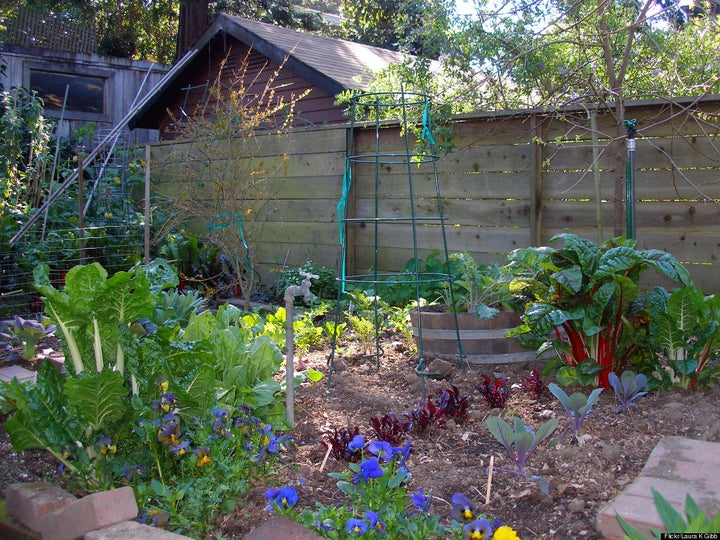
From Associated Content, by L. Lee Scott
Adding an eco-friendly design to your home landscaping can save you money and effort while providing a lifetime of beauty.
Going green is more than a fad. As climates change and resources decrease, it has become a necessity. More and more cities are looking at the effects of urban development, and requiring that green space be part of new projects. From green roofs to trees, shrubs and water features, the look of these cities is changing. But green isn't just for city developments; more and more individuals are looking for ideas for their own green landscaping.
The University of Minnesota has developed a plan to help homeowners and developers to design green landscapes. Called Sustainable Urban Landscape Information Series, or SULIS, it provides a wealth of information on sustainable green landscaping to the general public, as well as to the horticulture and landscaping industry.
As you plan for your own green landscape, consider the view you want outside your windows, and how your home will fit into your landscape. Across cultures, people have a desire for natural features, so consider small groves, water features and large rocks. A landscape based on nature can save money, reduce maintenance and nurture your soul, all at the same time.
Green landscapers know that good soil equals healthy plants. Since not all soil is created equal, you may need to work on yours. Plants need organic matter to grow. Create your own by composting; you can either buy a home composter, build your own composter, or simply buy compost material. Till or dig compost into your existing soil, where it will insulate the soil, help it hold water, add microorganisms that actually make fertilizer, and provide a base of nutrients that allows the roots and those little bugs to connect.
Select plants based on the soil's acidity or alkalinity, the amount of light an area receives, and the amount of water it will require -- less is better. Choose both woody plants -- trees, shrubs and ground cover, and herbaceous plants -- annual and perennial flowering plants, grasses, wildflowers, bulbs and ferns. Talk to your county extension agent or a knowledgeable person at a local plant store to help you choose native plants. They have the advantages of being better able to survive extreme conditions in your area, meaning they'll require less water and maintenance. They aren't invasive -- they stay pretty much where you put them, and can keep weeds out of their ecosystem. They'll also provide food and shelter for butterflies, ladybugs and other beneficial insects, and birds. They often enrich the soil, and they help rainwater percolate into the ground, reducing runoff.
If you want annuals, start them indoors in peat pots that can go right into the ground. That reduces the use of those little plastic pots and feeds the seedlings at the same time.
Cover open areas with mulch, another organic material. Ideally, mulch should be about half compost and half woody material, either chips or shreds. It's cheap and more than pays for itself through water savings and weed fighting.
Instead of wood, concrete or stone from a quarry for patios, decks or walkways, consider using materials made from recycled plastic. Many of them are quite attractive, and they have the advantage of not succumbing to rot or termites.
Water is a big consideration. The more lawn you have, the more water you'll need, so an important idea for green landscape design is to minimize grass. For other plants, use a drip irrigation system. Spray systems lose water to evaporation and wind, while drip irrigation uses less water but puts it exactly where it's needed.
You may be able to get some extra water for free. Consider this: a 1-inch rainfall on a 1,000-square foot roof with eaves and downspouts produces 600 gallons of water. Put a water barrel under the spout and cover it after the rain has fallen, and use it for your entire yard. Add some fish to the barrel to keep the bug population down. (If you live in the north, bring them in for winter.)
A few other ideas can make your landscape even greener by doing double duty. Instead of purely ornamental plants and shrubs, do some edible landscaping by planting berries, fruit trees and root vegetables. As you plant, consider who else might want to use your yard, and include some plants to provide habitat for wildlife. If mosquitoes and gnats are ruining your enjoyment of your green yard, get a house for bats, or plant flowers that attract mosquito-eating birds. You'll all be happier for it.
Sources:
www.plantea.com/edibleland.htm